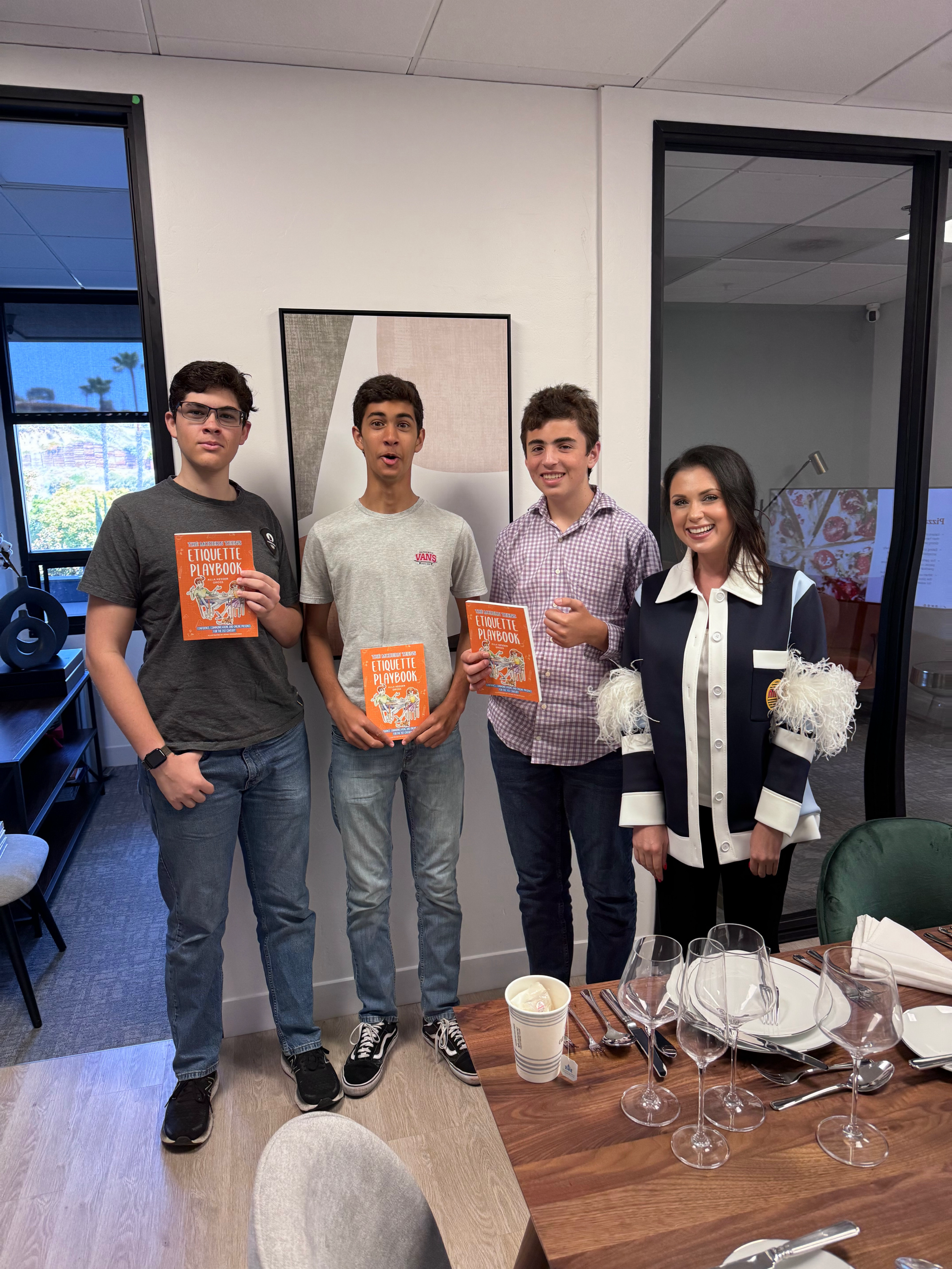Thank You Note Etiquette: Mastering the Art of Gratitude
In the realm of expressing gratitude, the thank you note stands out as a timeless and personal gesture that transcends the digital barrier of today's communication. Our adherence to thank you note etiquette not only reflects our manners but also fortifies our relationships, whether they are personal or professional. These small tokens of appreciation show that we acknowledge the effort and thought someone else has invested in our benefit, solidifying bonds and fostering mutual respect.
Writing a thank you note involves more than simply saying "thanks." It's about constructing a heartfelt and meaningful message that conveys the depth of our gratitude. A properly crafted thank you note can leave a lasting impression; it demonstrates our understanding of etiquette and our consideration for the receiver. The subtleties of tone, format, and timing are crucial elements that further convey the sincerity behind our gesture of thanks.
Key Takeaways
Writing thank-you notes is a sign of good etiquette and strengthens relationships.
A heartfelt message should address the specific act of kindness received.
The timing of a thank you note contributes to its effectiveness in conveying sincere gratitude.
Fundamentals of Thank You Note Writing
In this section, we will focus on the essential elements of crafting a proper thank you note, ensuring it appropriately communicates gratitude and leaves a positive impression.
Purpose and Importance
Writing a thank you note is a deliberate act of recognition that serves to express our appreciation for a gesture, gift, or kindness received. It's a personal touch that goes beyond casual thanks, reinforcing our gratitude and often bringing joy to the recipient. A well-crafted thank you note acknowledges the effort or thoughtfulness of others and can help nurture personal and professional relationships.
Choosing the Right Stationery
The choice of stationery for a thank you note can reflect the level of our appreciation and the nature of our relationship with the recipient. Personalized or quality stationery can add a touch of sincerity to our message.
Personal Touch: Opt for a style or design that conveys personality.
Quality Matters: Use good quality paper to signify the value of the gesture.
Formality Level: Choose stationery appropriate for the level of formality of the relationship or context.
By carefully considering the purpose of our thanks and the presentation through thoughtful stationery, we ensure our thank you notes are received as a genuine expression of our gratefulness.
Types of Thank You Notes
We can broadly categorize thank you notes into three main types: personal, professional, and occasion-specific. Each type carries its own set of nuances in tone and content, tailored to the recipient and the situation.
Personal Thank You Notes
Handwritten thank you cards shine in personal contexts. They convey our appreciation to friends and family members who might have given us gifts or lent support. We ensure our notes are heartfelt and specific—acknowledge the gift received or the gesture made, expressing how it has impacted us. For a friend who sent a thoughtful birthday present, a simple, "Your hand-selected book was touching and showed how well you know me, thank you" makes the note personal and appreciated.
Professional Thank You Notes
In professional settings, thank-you notes often follow interviews, meetings, or business collaborations. It's crucial to maintain a courteous tone that reflects well on our professional image. We choose quality stationery or professional digital formats and express gratitude for the opportunity, discussing specific points that were beneficial. For example, after interviewing for a senior designer position, we might write, "Thank you for the enlightening conversation on the future of design and for considering me for the role."
Occasion-Specific Thank You Notes
Certain occasions call for thank you notes that cater to the event's specificity. Wedding thank you notes, for instance, should be sent promptly and mention the specific gift or contribution. We say, "Your generous gift and well-wishes added to the joy of our special day." For baby shower thank-you notes, we express appreciation for the gifts and support as we prepare for the new arrival, like, "Thank you for the adorable baby outfits; we feel supported by your kindness." Kids may also send thank you cards for birthday gifts, ensuring a practice of gratitude from a young age.
Content and Structure
To ensure thank you notes effectively convey gratitude, we must pay careful attention to their content and structure. A well-constructed note creates a personal connection, details the reasons for gratitude, and ends with a warm sentiment.
Creating a Personal Connection
We start our thank you notes with sincerity in the first sentence, which is crucial for establishing a connection with the recipient. It should be personal and specific to the relationship we share. For example:
Professional Context: "Dear Mr. Smith,"
Personal Context: "Hi Jenny,"
Expressing Thanks with Specific Examples
In the second and third sentences, we focus on expressing gratitude by mentioning specific details. This specificity shows that we remember the act of kindness and consider it significant. Here's a simple structure we can follow:
Acknowledge the Gift or Gesture: "Thank you for the generous gift of the handmade quilt."
Express the Impact: "It has added warmth and comfort to our home during the winter."
Closing with a Warm Sentiment
The fourth sentence is our opportunity to close the note with a warm sentiment that reflects our genuine appreciation. The closing line should reinforce the sincerity of our gratitude. Some examples include:
Formal: "With sincere thanks,"
Less Formal: "Many thanks and best wishes,"
By meticulously crafting each part of the thank you note, we ensure that our expression of gratitude is well received and cherished.
Delivery and Timing
In our experience, ensuring the timely delivery of a thank you note is almost as important as the message it conveys. The choice of delivery method and the timing have a significant impact on the effectiveness of your gratitude.
Choosing Between Handwritten and Digital
Handwritten notes are traditional and often perceived as more personal. They convey effort and thoughtfulness, which can strengthen personal connections. Use this method when:
We want to express deep gratitude.
The recipient prefers traditional communication.
The occasion is significant, such as after a wedding or a formal event.
For Digital notes, we consider emails or text messages, which offer immediacy and are suitable in a professional context or when a quick response is necessary. Digital is optimal when:
Timeliness is critical.
We have an existing digital rapport.
The relationship is less formal or more modern.
When to Send Your Thank You Note
The timing of sending a thank you note largely depends on the context, but here's a simple guideline:
For gifts or interviews, send within 24 to 48 hours.
After a personal event, we have about one week.
Following a professional event, it's best to express thanks within a few days.
Remember that while email may deliver a swift response, the warmth of snail mail can resonate more deeply. Regardless of the method, timeliness reflects our appreciation and respect for the recipient's time and effort.
Frequently Asked Questions
In this section, we address common inquiries regarding thank you note etiquette, providing clear answers to help you navigate various social and professional situations.
What is the appropriate time frame for sending a thank you card after an event or receiving a gift?
Ideally, a thank you card should be sent within two weeks of receiving a gift or attending an event. This swift response shows appreciation and thoughtfulness.
Should a wedding thank you note be handwritten for a more personal touch, or are printed notes acceptable?
For weddings, handwritten thank-you notes are preferred as they add a personal touch to show genuine gratitude. While printed notes are acceptable, they lack the personal connection that handwriting conveys.
What are the guidelines for writing a professional thank you note in a business setting?
In a professional context, promptly send a thank you note after an interview or business meeting. Use professional language, keep it concise, and make sure to mention specifics from your interaction to highlight your attentiveness and interest.
Are there specific traditions or expectations for thank you card etiquette following a funeral?
After a funeral, it's customary to send thank you cards to those who offered support, sympathy, or service within two weeks to three months. These notes acknowledge their compassion during a difficult time.
What are the common pitfalls to avoid when writing a thank you note?
Common mistakes include waiting too long to send the note, being vague in your gratitude, and using incorrect names or spellings. Ensure each note is personalized and sent in a timely manner.
How have the perceptions and practices surrounding thank-you notes changed in modern times?
Today, there's a broader acceptance of digital thank-you messages, especially for casual gifts or gestures. However, in formal settings and significant life events, traditional handwritten notes remain the gold standard.



